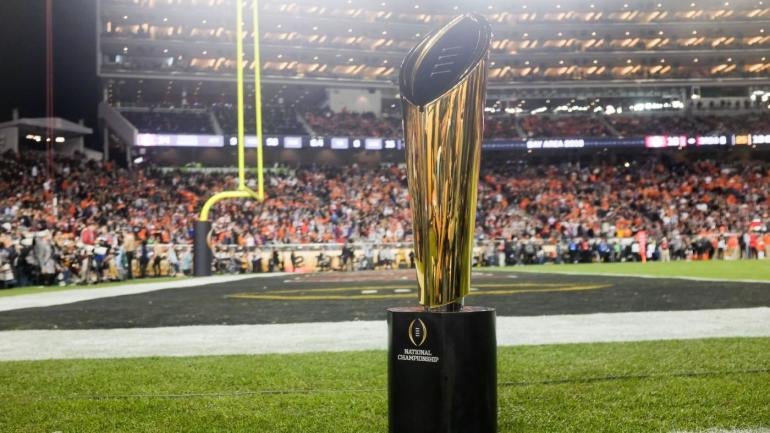
Just one more season of the four-team College Football Playoff field remains before the sport undergoes a historic shift. Beginning in the 2024 season, the CFP will adopt a 12-team format that includes byes, automatic bids and on-campus games as part of a historic change in how college football's national champion is determined.
Though we're still a couple years away from expansion, the criteria for how the bracket will be composed is already known, and that allows us to take a hypothetical look at what a 12-team CFP would look like in 2022. The top six conference champions would each receive automatic bids, meaning AAC champion Tulane would have made it this season even though the Green Wave are ranked No. 16 in this year's CFP Rankings.
Also, Clemson and Utah would be the No. 3 and No. 4 seeds, respectively, in the 12-team format since the top four conference champions are slated to earn automatic byes. As multi-loss teams, neither had a shot at cracking the four-team field this year under the current system, which only grants at-large bids.
The expedited change to adopting a 12-team format became official when the CFP's Board of Managers formally approved it on Dec. 1, and we've already explored how the 12-team format would have looked in previous years. Now, let's look at how things would have shaped up in 2022 under the 12-team CFP structure that will be implemented in 2024.
Criteria
- 12-team bracket: Six highest-ranked conference champions (no minimum ranking requirement) plus next six highest-ranked teams
- Rankings system: CFP Selection Committee will continue to determine weekly rankings with criteria to be reevaluated
- Bracket placement: Four highest-ranked conference champions will be seeded 1-4 with first-round byes; four highest remaining seeds will host lower seeds at sites to be determined
- Scheduling: First-round games will be played at campus sites on either the second or third weekend in December, at least 12 days after conference championship games
- Bowl relationship: Quarterfinal and semifinal games will be played at rotating bowl sites subject to agreements being reached; national championship will continue being played at neutral sites; existing conference relationships with bowls will be considered for game placements
Byes
These are awarded to the four highest-ranked conference champions.
1. Georgia
2. Michigan
3. Clemson
4. Utah
Rest of field
5. TCU
6. Ohio State
7. Alabama
8. Tennessee
9. Kansas State
10. USC
11. Penn State
12. Tulane
College Football Playoff
First round
Game 1: (9) Kansas State at (8) Tennessee
Game 2: (12) Tulane at (5) TCU
Game 3: (10) USC at (7) Alabama
Game 4: (11) Penn State at (6) Ohio State
Quarterfinals
Game 5: (1) Georgia vs. Game 1 winner
Game 6: (4) Utah vs. Game 2 winner
Game 7: (2) Michigan vs. Game 3 winner
Game 8: (3) Clemson vs. Game 4 winner
Breakdown
Under the 12-team format, conference championship games will take on new significance. Kansas State would have locked up its own spot in the CFP and robbed TCU of a first-round bye with its win over the Horned Frogs in the Big 12 Championship Game. The same goes for Utah as a result of its win over USC in the Pac-12 Championship Game. The Utes would have gone from a bubble team to the No. 4 seed because of their win.
If Kansas State or Utah had lost, it would have marked their fourth defeats of the season and may have knocked them out of the bracket. In that scenario, Washington would have benefitted. The Huskies finished No. 12 in the CFP Rankings as the only two-loss team from a Power Five conference to miss this year's hypothetical 12-team field.
One quirk of the new format that will be debated is over the fourth-best conference champion and the fifth-best conference champion. The fourth-highest ranked conference champion gets a first-round bye while the fifth-ranked conference champion does not. This year, those teams were Utah and Kansas State, and there wasn't much difference between them.
Utah finished at No. 8 and Kansas State finished at No. 9. But because the Utes narrowly edged the Wildcats in the rankings, their lot would have been significantly better in this year's hypothetical 12-team bracket. Utah would received a bye before playing either Tulane or TCU in a quarterfinal matchup. On the other hand, Kansas State would have had to play at Tennessee in the first round and then would've had to play a well-rested and top-ranked Georgia team if it won.





















